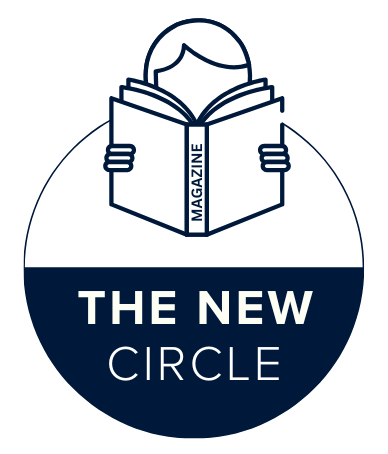Introduction
Ever feel like your day is a tangle of tools, tickets, and tech jargon? You’re not alone. The idea of simpcitu—finding direct, simple, and elegant solutions in complex systems—offers a different path. Instead of glorifying intricacy, simpcitu rewards clarity and speed. Adopt it, and you’ll ship sooner, break less, and collaborate better. This article shows how simpcitu can sharpen your code, your projects, and your career.
What is “Simpcitu” and Why Does It Matter in Tech?
Think of simpcitu as simplicity plus celerity: the discipline to remove what’s unnecessary and the drive to move decisively. In tech careers, complexity creeps in from everywhere—overgrown architectures, fashionable but misfit tools, and meetings that multiply like microservices. Simpcitu pushes back with three rules:
- Prefer elegant over intricate. If two solutions deliver the same outcome, pick the one with fewer moving parts.
- Bias for speed with safety. Move quickly, but anchor decisions in tests, metrics, and rollback plans.
- Communicate in headlines. Clear writing and direct speech reduce misreads and rework.
Why it matters:
- Efficiency: Shorter feedback loops and fewer handoffs.
- Fewer errors: Smaller surfaces mean fewer defects and faster root-cause analysis.
- Better collaboration: Clear interfaces, clear docs, clear expectations.
Simpcitu in Practice: A Guide for Data Scientists and Developers
Simplifying Your Code and Projects
- Design tiny interfaces. Keep modules small and responsibilities single. A function that does one thing is easier to test, cache, and replace.
- Cut cleverness. Choose readable patterns over novelty. A well-named loop often beats an obscure one-liner.
- Prune data models. Start with the variables that actually move the metric. For a churn model, focus on recency, frequency, and value before layering niche features.
- Benchmark early, not late. Swap in a baseline (e.g., logistic regression, simple heuristics) before deep nets or exotic ensembles. If a baseline wins or ties, you just saved weeks.
- Create guardrails, not bureaucracy. Enforce pre-commit hooks, unit tests, and a smoke-test pipeline. Keep the checklist short enough that people actually use it.
- Write “two-page tech specs.” One page for the problem and constraints; one page for the smallest viable solution, risks, and test plan. If the spec grows beyond that, the design may be too big.
Project tip: Time-box exploration. For example, “48 hours for feature engineering; 24 hours to compare three models; ship the winner with clean metrics.” Simpcitu frames work as a sequence of decisive steps rather than a fuzzy hunt.
The Entrepreneurial Angle: Simpcitu and Startup Success
Startups die from indigestion more than starvation. Simpcitu keeps founders focused on a tight MVP:
- One problem, one persona, one promise. If you can’t state these in a sentence, you’re not ready to build.
- Prototype in days, not months. Use off-the-shelf auth, hosted databases, and a single region. Optimize only what customers feel.
- Ruthless backlog hygiene. Keep a “Now / Next / Later” board. “Later” is where good ideas go to prove they’re still good in a month.
- Instrument every flow. Track activation, retention, and time-to-value. Data replaces debate and accelerates learning.
Many breakout products began as something stark and focused. Simpcitu is the operating system for that focus.
Cultivating a Mindset of Simplicity for Career Advancement
Improving Communication and Collaboration
- Write first, meet second. Start with a one-page brief: problem, proposed solution, trade-offs, decision owner, and deadline. Distribute async; meet only to resolve.
- Speak in decisions. Replace “we could…” with “we will…, because…, by…”. Decisions create momentum and accountability.
- Use decision logs. Record context, options, and the chosen path. It reduces bike-shedding and prevents “why did we do this?” archaeology.
- Document for the next person. Pretend your future teammate has one hour to understand the system. What would they need? That’s your doc.
Stripping Down Your Career Goals
- Pick two core skills. For a data scientist: modeling + product sense. For a developer: systems design + DX (developer experience). Stack skills that compound.
- Tight resumes win. One page; outcomes over tasks. Replace “built dashboards” with “cut data prep time 40% by building a reusable ingestion library.”
- Portfolio clarity. Showcase 2–3 projects with crisp summaries: problem, smallest solution, measurable result, and what you’d do next.
- Design your week. Block two deep-work windows daily, batch communications, and set a “stop doing” list (e.g., tool-churn experiments outside quarterly cycles).
A quick comparison
| Approach | Hallmarks | Risks | When to Use |
|---|---|---|---|
| Complexity-First | Big designs, many tools, long specs | Scope creep, slow learning, fragile systems | Rare, high-regulation contexts |
| Simpcitu-First | Small surfaces, fast loops, clear writing | Risk of under-scoping (mitigate with metrics) | Most product and data work |
FAQs
1) What does “simpcitu” mean in a professional context?
It’s the practice of choosing the smallest effective solution and communicating it quickly and clearly. Fewer parts, faster loops, better outcomes.
2) How can simplicity improve my career as a data scientist?
It shortens iteration cycles, clarifies model value, and makes your work easier to maintain. You become the teammate who ships useful insights on schedule.
3) What are examples of simpcitu in software development?
A single service with a clean API instead of five microservices; a two-page spec; a baseline model shipped with strong monitoring before adding complexity.
4) Is simpcitu a real concept or just a buzzword?
It’s a practical lens. Many high-performing teams already operate this way—small PRs, short specs, fast releases. The label helps you teach and repeat the behavior.
5) How does simpcitu apply to startups?
By forcing a sharp MVP, speeding learning loops, and keeping burn focused on what customers notice. It’s how you reach product-market fit without drowning in features.
6) How can I start applying simpcitu tomorrow?
Pick one project. Write a two-page plan, decide the minimum shippable result, add smoke tests, and set a 7–14 day ship target. Review metrics, then iterate.
Conclusion
Simpcitu isn’t about dumbing things down. It’s about elegance: choosing the direct route, communicating plainly, and measuring what matters. For tech professionals—developers, data scientists, and founders—that approach yields sturdier systems, faster learning, and clearer careers. Start small: trim a spec, simplify a model, or cut a tool you don’t need. Apply simpcitu to your next project or decision, and let the results speak for themselves.
YOU MAY ALSO LIKE: Unlock Entertainment & Tech Insights at trwho.com: Your AI-Powered Playground

